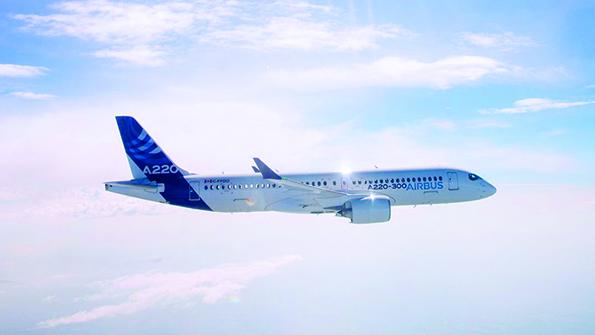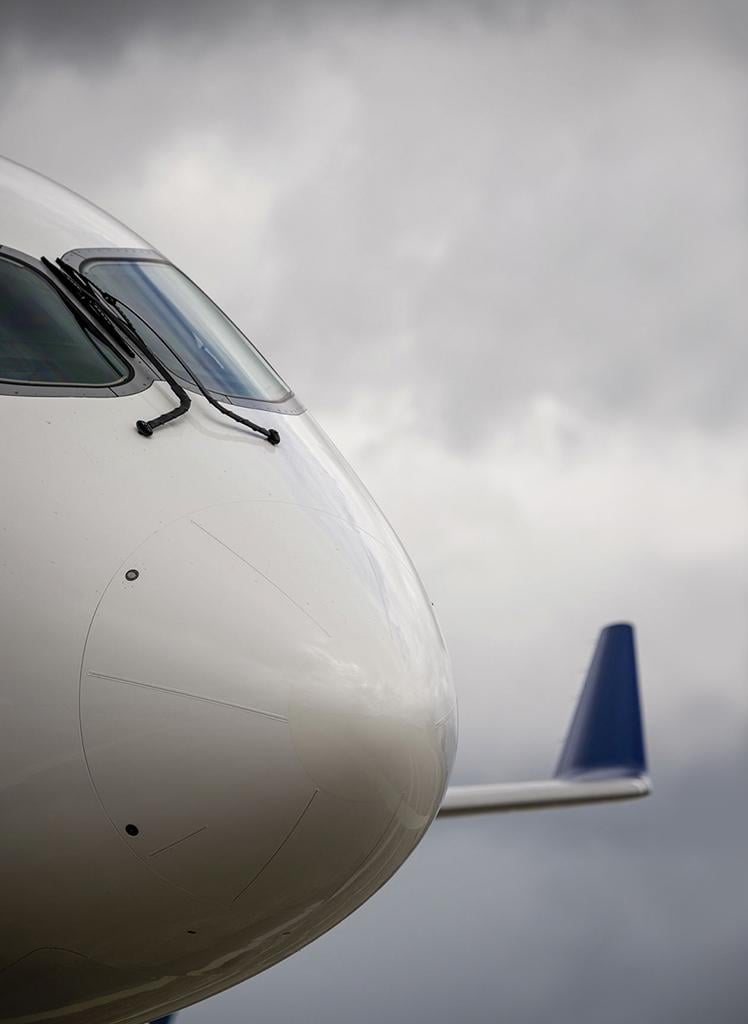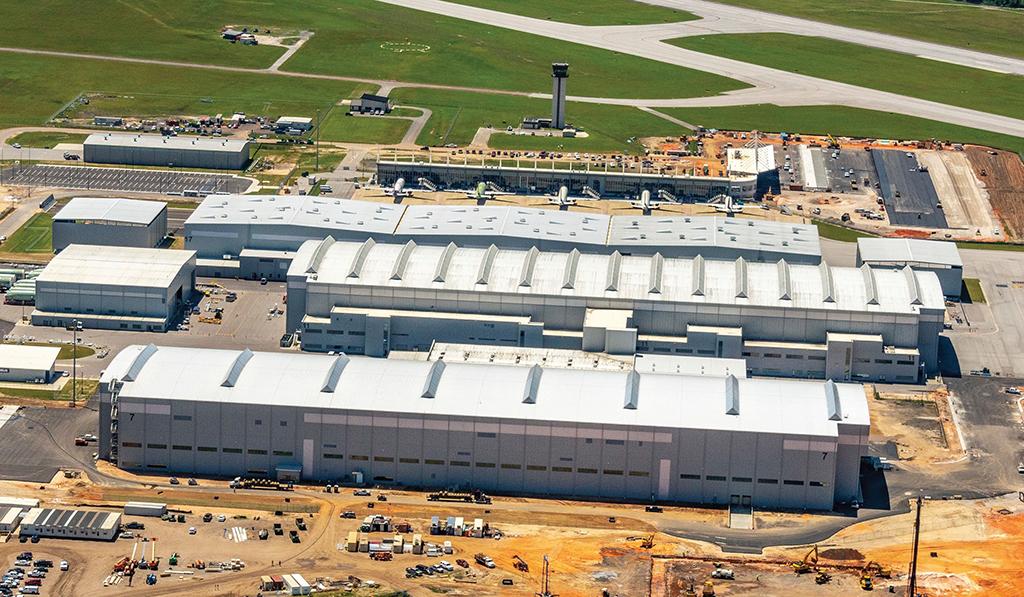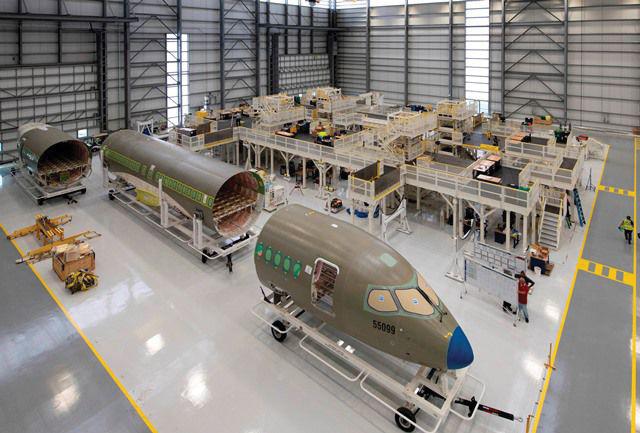
When Airbus acquired what was then called the Bombardier C Series in 2017 for essentially nothing plus guaranteed loss-sharing with the Canadian company, most analysts were full of praise for the move. They felt it would put Airbus in a much better strategic position vis-a-vis Boeing for years to come.
- A220 seen as an effective tool in air transport recovery
- Despite pandemic, production to rise in coming years
- Stretched A220-500 could complement family
Aviation Week called the transaction Airbus’ “deal of the century” (AW&ST Oct. 30-Nov. 12, 2017, p. 20). And when Airbus decided to take over the remaining stake Bombardier held in what is now called the A220 program, it was seen by most as a natural decision, given the aircraft’s potential.
But now COVID-19 has changed the world—and with it, air transport. The big reset affects essentially all aspects of the industry.
Even the most modern narrowbody available today is suffering enormously from the impact. And though the strategic rationale for the deal and the positive long-term outlook for the program itself remain, the original business plan for the A220 is history and needs to be rewritten. That realization has come just as the program was about to take off in earnest. There are ample uncertainties about whether it can fill the role that Airbus envisioned, at least in the short and medium term.

In 2019, Airbus delivered 48 A220s, in line with the initial baseline production rate of four aircraft per month. The plan was to take it upward as fast as possible from there, both to have the program profitable by 2025 and to justify the politically driven introduction of the second final assembly line in Mobile, Alabama, which officially opened in May.
What happened, of course, is quite the opposite. In the first eight months of 2020, Airbus delivered only 13 A220s. Unless there is a sudden spike in deliveries between now and year-end, Airbus will fall short of even the most pessimistic analyst projections for the program. Agency Partners, for example, estimated the A220 at 38 aircraft for the year.
Richard Aboulafia, vice president for analysis at the Teal Group, is less pessimistic. He still expects Airbus to deliver 40 A220s this year and 55 in 2021. He believes it will reach a production rate of 10 per month in 2025. “I still believe things could come back fast once there is a [COVID-19] vaccine,” he says.
The Mirabel, Quebec, assembly line was closed for seven weeks from late March and into May following a Quebec provincial government order. The line is now producing three aircraft per month and is going to five by mid-2021, one year later than planned. Mobile is building one aircraft per month.
Combined, the two production centers have a capacity of 14 aircraft per month: 10 in Mirabel and four in Mobile. That capacity could be expanded further with more investment should that be needed. Airbus is keeping to its target of expanding output to 14 by mid-decade but cautions: “This could be adapted as the market evolves over the coming years and in the context of the COVID-19 crisis.”
“The production numbers are reasonable,” says Adam Pilarski, senior vice president at consultancy Avitas. “They can and should try to ramp it up. I have confidence in the Airbus plans. . . . [It can] easily be a 1,000-aircraft program.”
The Mobile facility has five stations and can build both the A220-100 and -300. Before construction of the site was completed, the first few aircraft were assembled in the nearby A320neo hangar. Nine A220s are in various stages of assembly in Mobile. JetBlue is planned to become the second U.S. airline to take delivery of an A220 from the U.S. line by year-end.
In 2020, Delta Air Lines has taken three A220-100s; 10 additional aircraft went to Air Canada and EgyptAir and were delivered from the main base in Mirabel. Even before the novel coronavirus pandemic hit, Airbus’ main sales challenge for the A220 was to find enough customers outside the U.S. to either enable the planned Mirabel ramp-up or at least sustain the existing rate well into the future. The prospects of resuming growth, or even sustaining rates—both there and in Mobile—are not good for the foreseeable future.
Another issue is the high dependence on just a few U.S. customers, particularly for the next five years. According to the Aviation Week Intelligence Network Fleet Discovery database, JetBlue, Delta and David Neeleman’s start-up Breeze Airways are the three main customers for the Mobile line. In 2021, the three are due to take a combined 26 aircraft, then 40 in 2022, 52 in 2023 and 44 in 2024.

Over the next four years, Mirabel is planned to depend on three large customers—Air Canada, AirBaltic and Air France—but their combined backlog of 65 aircraft is not nearly enough to fill production capacity, even at much-reduced rates. Air Canada is due to take delivery of 37 remaining A220s through 2023, 27 of them planned for 2021 and 2022, according to Fleet Discovery. AirBaltic has 28 more aircraft on firm order and recently decided to stretch deliveries into 2024. The last of 50 aircraft originally were agreed to arrive at the end of 2023. Air France is slated to take five aircraft in 2021, rising to 14 each year in 2022-24.
Air Lease Corp. placed an order for 50 A220-300s in 2019, but the bulk will arrive only from 2025 onward. Production could be split between Mirabel and Mobile.
The A220 is well-positioned competitively. Its only real competition is the Embraer E2—and Embraer is further weakened after the collapse of the planned commercial aircraft partnership with Boeing. The A220 version that does compete with the E2 in terms of size is the -100. Depending on cabin layout, it sits somewhere between the E190-E2 and the E195-E2. However, at a maximum takeoff weight of 63 tons, it is much heavier than the E190-E2 (56.4 tons) and even the E195-E2 (61 tons). And it has a lot more range: 3,400 nm versus 2,800 for the E190-E2 and 2,600 for the E195-E2.
While they are competing superficially, the types really address different market segments. The A220-100 is a niche aircraft—most of the A220 orders are for the larger -300 version—suitable for long, thin routes. Airlines pay a cost penalty when they use it on shorter routes in spite of its weight. More traditional regional connections in Europe or the U.S. are better served with the E2 in principle, though none of the E2 versions including the smallest E175-E2 is compliant with scope clause limitations. But neither is the A220.
The larger A220-300 is effectively beyond the range of the E2. This is true not only in terms of size but also, literally, range. Airbus is working on versions of the aircraft that would extend the range to around 4,000 nm, making it capable of flying across the Atlantic or deep into Latin America from the U.S. But the A220 is also well-positioned to be stretched further, to cover what is now the Boeing 737-7 and -8 market.
Despite the differences, there will nonetheless be competition. The reality is some airlines are operating the A220 even if they do not need its range, in part because Airbus can combine A220 deals with other models such as the A320neo. That is why Embraer tried to tie up with Boeing and offer a similar portfolio of aircraft.
A key element in the future competition will be Embraer’s approach to pricing: It has so far sought to reach the same pricing premium vis-a-vis the E1 family that Airbus has targeted for the A320neo over the A320. That approach has not worked well, as demonstrated by the relatively low level of orders. Another challenge is bringing supplier costs down enough for healthy E2 margins despite lower volumes. The A220 faces the same challenge, except that under Airbus ownership the chances of actually making the program profitable are better due to the backing of a large organization.
It has been argued that the A220, and the Embraer 195-E2 for that matter, will benefit in the COVID-19 recovery as airlines focus on minimizing trip costs and revenue risk by flying smaller aircraft. Airbus says 80% of the A220 fleet had returned to service by July—with the trend continuing, essentially toward a complete return.
But that does not necessarily translate into future sales, as few airlines are currently in a position to invest in more aircraft. Even Airbus CEO Guillaume Faury recently commented that he believes that a steep, “quite brutal,” ramp-up in production could arrive as early as 2022 as airlines rebound. In such a scenario of fast catch-up growth, will airline executives focus on risk containment, or will it be all about market share again?
Aboulafia still thinks caution could play to the A220’s favor. “The history of traumatic events shows that [management teams] come back mindful that they want a smaller plane,” he says. They must reconcile two conflicting targets: reestablishing as much of their former networks as possible with as little capacity as possible. Attempting both would require smaller aircraft. “There will be a much more conservative comeback [than after previous crises],” he predicts.
And while the A321neo became a major sales success before the crisis, and subsequent deliveries over the next few years will change the composition of the narrowbody fleet, Aboulafia believes the aircraft will mainly find a role as a widebody replacement—particularly the LR and XLR versions—and not necessarily operate in the roles formerly covered by the A320 or Boeing 737-800.
Airbus offers two versions of the A220, the -100 and the larger -300, and the market has indicated its preferences. There are 54 -100s remaining to be delivered, 10 of which are supposed to go to a crowdfunded airline project called Odyssey, based at London’s Heathrow Airport and first announced in 2011. Odyssey has moved back its launch date several times. There are 10 additional orders for undisclosed customers. Meanwhile, the backlog for the larger -300 stands at 470 units.
There is an ongoing debate about whether or not Airbus will stretch the aircraft further and offer an A220-500 that would be equivalent in size to the A320neo and Boeing 737-8. Given that it would be a stretched and new-technology aircraft, it is widely expected to feature superior economics compared to the derivative models. Strategically, the A220-500 could be of great value in positioning Airbus’ eventual new narrowbody, which would replace the A320neo family and compete with whatever aircraft Boeing develops to replace the 737 MAX.
With the -500 in place, Airbus could move the baseline version of its next-generation short- and medium-haul aircraft upward to 180-200 seats while leaving the segment below to the A220. Boeing instead could be forced to cover the entire segment with one family, which would likely make the economics of the smaller versions worse.

But the A220-500 decision is not simple. Charles Armitage, European Aerospace and Defense Analyst at Citi Research, points out that Airbus is making a substantial profit margin on the A320neo and would endanger that highly profitable program with one that is marginal so far. Aboulafia thinks “the -500’s virtues outweigh the disadvantages.” Cannibalizing the A320neo can be avoided by moving the -500’s service entry to 2027, by which time a large part of the current A320neo backlog will have been delivered despite the current crisis, Aboulafia says.
While this may not be a good time to invest in any product, Pilarski thinks there is one exception: the A220. In the short term, he contends, Airbus should put money into improving an already good aircraft and increasing commonality with the legacy Airbus products. But he also thinks that further down the road a carefully planned and timed -500 is a good idea. Good timing means making it available only when the bulk of the A320neo backlog has been burnt off, as Aboulafia suggests. It also means sufficient spacing between its own entry into service and whatever “moonshot” hydrogen-powered aircraft Airbus will deliver in 2035.
But competition from a hydrogen-powered aircraft should not be too much of a problem for the A220, Pilarski believes, since the next-generation aircraft will not be available in great numbers until the late 2030s, and investment in the A220 will have been limited anyway.
And as -100 sales were tapering off before the COVID-19 pandemic, and some customers such as Swiss International Air Lines decided to convert part of their original orders to the larger -300, the A220 risks becoming essentially a one-type family without a larger version. Another argument in favor of the -500 is that Airbus has to keep its engineers busy when work on the A321XLR, currently its only major derivative program, is completed.





